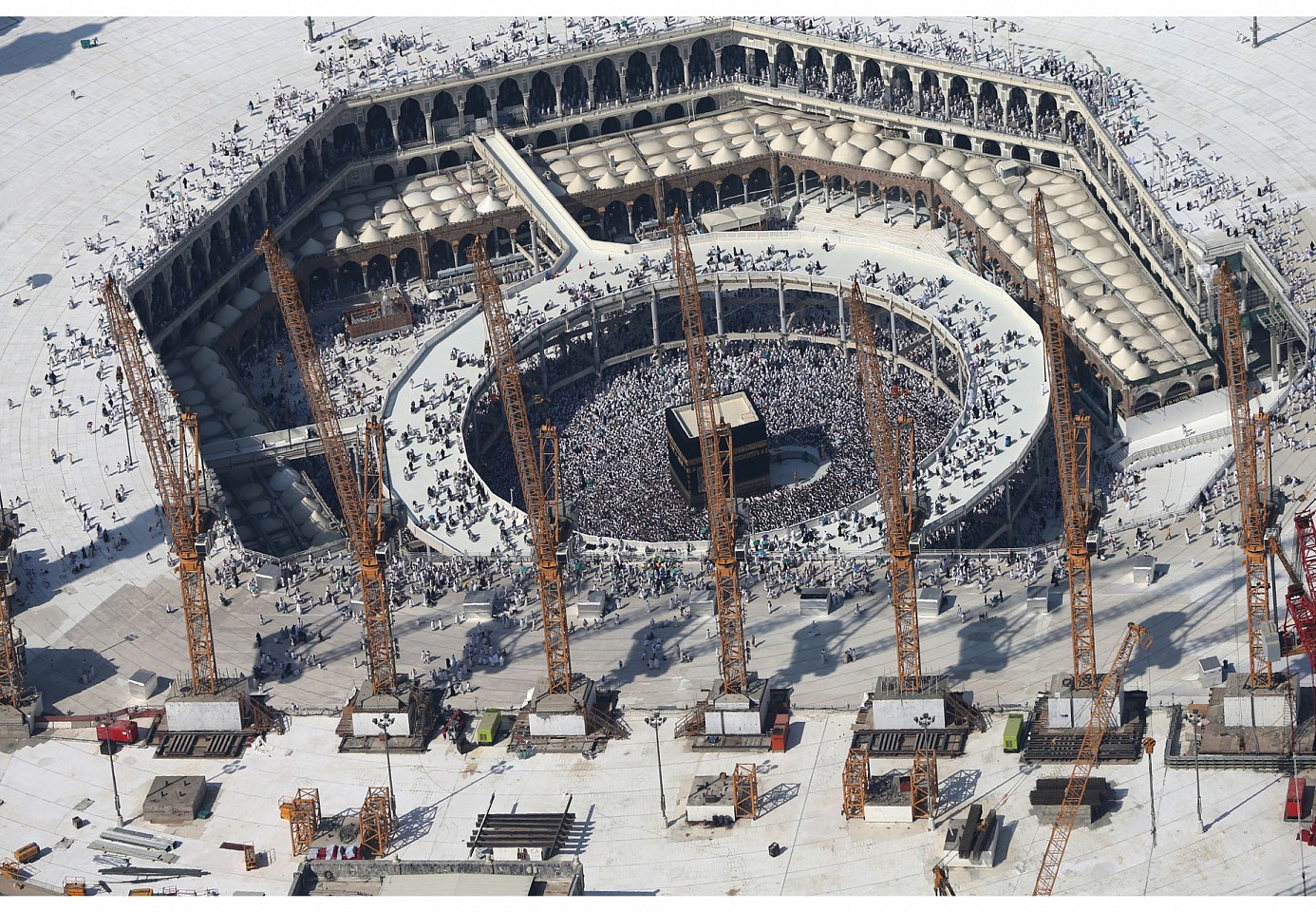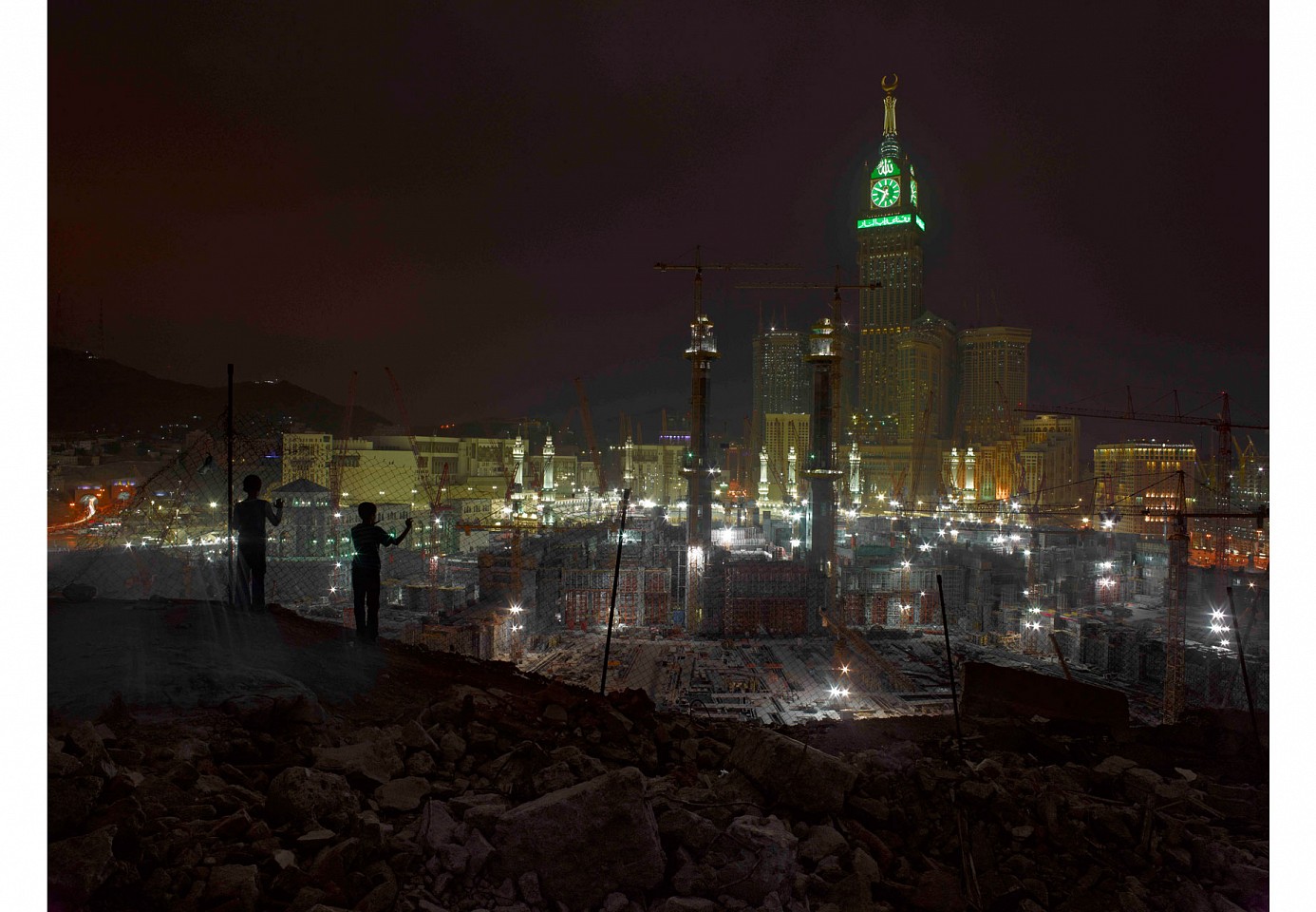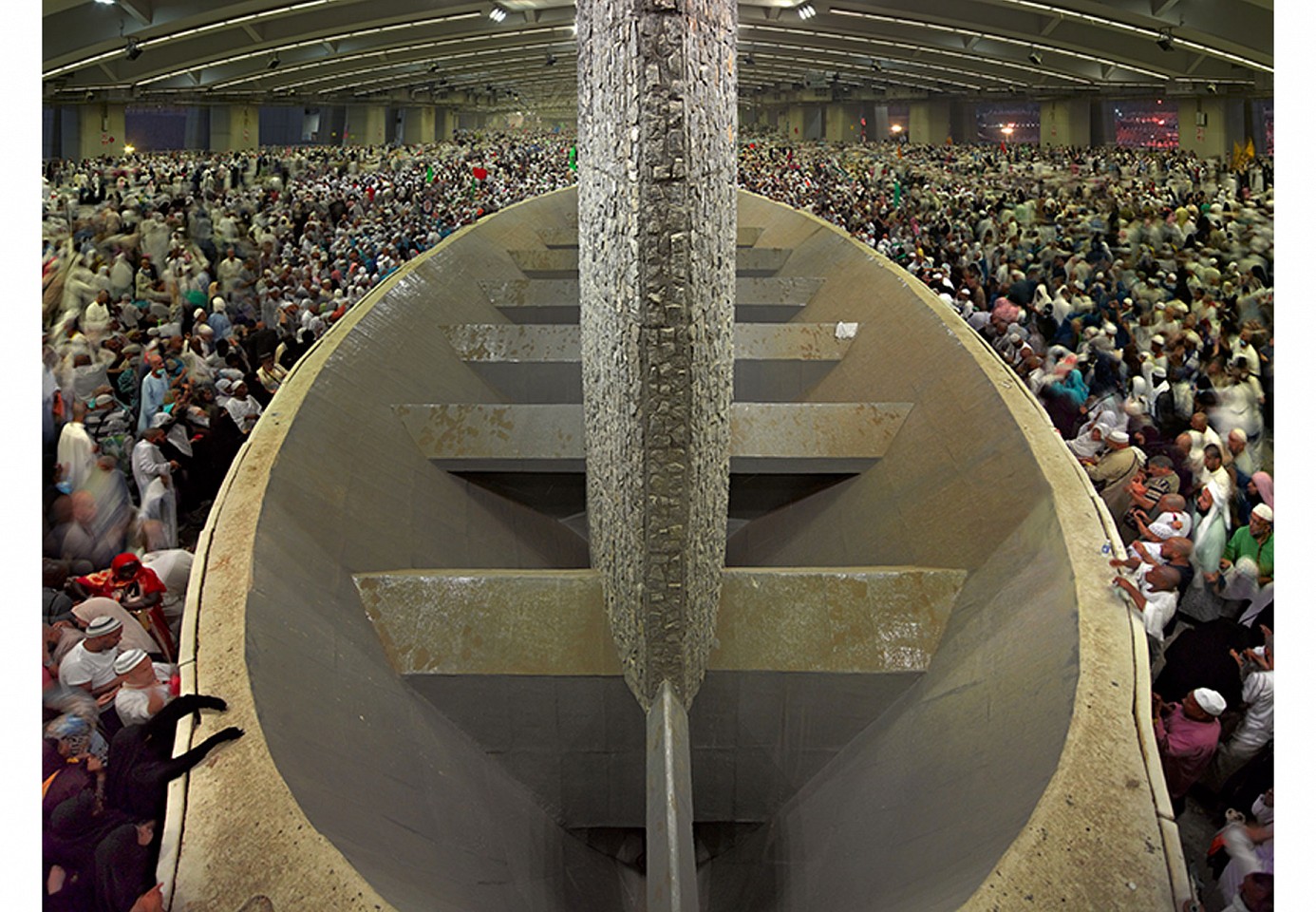Ahmed Mater
Untitled, 2012
Fineart Latex printer and matt 200g unbleached printing paper
145 x 200 cm (57 1/16 x 78 11/16 in.)
Edition of 5; From Desert of Pharan series
AHM0220
Ahmed Mater
Let it Be Passed, 2012
Fineart Latex printer and matt 200g unbleached printing paper
145 x 200 cm (57 1/16 x 78 11/16 in.)
Edition of 5; From Desert of Pharan series
AHM0215
Ahmed Mater
Pelt Him!, 2014
Fineart Latex printer and matt 200g unbleached printing paper
182 x 142 cm (71 5/8 x 55 7/8 in.)
Edition of 5; From Desert of Pharan series
AHM0225



Athr Gallery brings three key artists from the Middle East who use photography in distinctive ways. Ahmed Mater works with un-manipulated, large-scale images, tracking the transformation of Makkah; developments which are being implemented on an immense scale. Hazem Harb works with old photographs, scanning them and digitally manipulating them to reconstruct their meaning and implicit messaging. Emy Kat, takes documentary photography as his departure point. Whilst their technical approaches and concerns are diverse, the artists brought together for Paris Photo share a common preoccupation with the changing social, political and economical landscapes of their respective homes.
Amid a rapidly changing economic landscape, Makkah is re-examining its methods and its relationship with itself and the rest of the world. Whilst it does so, Ahmed Mater has been given privileged access to the site and has recorded its transformation both in photographs and found objects (100 Found Objects recently exhibited at the Sharjah Art Foundation). At Paris Photo, the artist shows a selection of works from his Desert of Pharan series, works that reflect the physical and consequential scale of these changes. As Mater invites us to look closely at the holiest site in Islam–one which is now host to what is seemingly a futuristic experiment–he asks us to attune to the dissonance today among many of those who live in the city or maintain an emotional stake in its future. What this place is, what it could be or what it should be, provide a contextual background to Mater’s urban exploration and the questions we are left asking ourselves in the face of Makkah’s vast and dramatic symbolism.
Hazem Harb works across a range of media, from video, installation, sculpture to print, works on canvas and photography. For Paris Photo, the artist takes archival images of his home, encompassing the geographical, social and familial history of Palestinians, both before and after 1948. The works, which form his Beyond Memory series, are prints from digital manipulations of the original images. Through this handling, Harb almost negates or smothers the original imprint and record of that time and place with overlays of more recent images, each layer a reflection of the recent historical events that have happened during and since the 1940s. The memories of Palestine, a civilization existent for thousands of years before being demolished, no longer have any strength of narrative, the remaining fragments evident only in shards from beneath the weighty remnants post geographic and social division.
Emy Kat uses a variety of photography-based processes to navigate and document the disintegrating heritage of Saudi Arabia amidst the rapidly changing urban landscape. Focused on dilapidating architecture as a representation of these changes, he draws out narratives from a continued documentation of spaces, highlighted through medium format analogue, macro photography and digital collage the detail and unique characteristics implicit in each. Ultimately the works underline the need to preserve heritage as a basis upon which all people identify, one which may have in recent times been dismissed, but which can still be found somewhere within the confines of contemporary Saudi culture.






